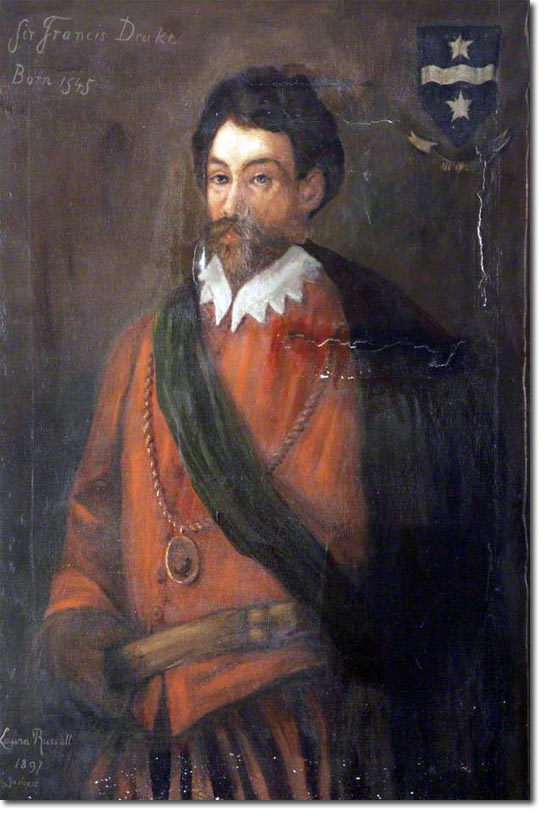|
|

 |
|
Although originally from the Tavistock area and growing up along the Medway, Francis Drake made his way to Plymouth as a young seaman in order to work with his kinsmen, the Hawkins' who had established themselves as successful seafarers in the city. Drake was to make his reputation as a mariner on the various slave trading voyages organised by his uncle and departing from Plymouth. More of Drake's seafaring story can be read here.
The success of the Panama expedition had made Drake noticed but it was the 1577 voyage that turned him into a household name. The fact that one shipaccom panying his expedition had returned and reported that he had most probably died and the fact that he wasn't seen for three years when he suddenly appeared in the Sound. By all accounts, St. Andrew's Church emptied on the Sunday morning as people rushed to see his return on the Golden Hinde. He brought back huge quantities of prize money which he stored at Trematon Castle in nearby Saltash before having the majority of it moved to the Tower of London. With the success of this voyage he was knighted and was chosen by the aldermen of Plymouth to become Lord Mayor. He bought Buckland Abbey just to the North of the City and set about becoming a man of consequence. He entered parliament although for an unknown constituency in 1581 and then Bossiney in 1583 and only sitting for Plymouth in 1593. One of the most significant interventions by Drake in Parliament was an intervention to help Walter Raleigh establish the legal rights to undertake his colonisation of the Americas. In fact, Drake would even visit the fledgeling colony at Roanoke at the tail end of his next voyage to the West Indies returning to Plymouth in 1586. Drake launched his attack on Cadiz from Plymouth in 1587 and may well have motivated him to seek to strengthen the fortifications of Plymouth as a result. Drake did seem to give permission for the strengthening of Plymouth Castle on the Barbican. However, it was the role of Drake in helping to defeat the Spanish Armada that turned him into an icon. The fleet had been positioned at Plymouth in order to allow it to harry the Spanish fleet as it sailed up the English Channel. He realised that he westerly winds would be more advantageous to the English for chasing them from the west rather than waiting at Dover for a fleet, by which time the Armada may have been unstoppable. Drake was vindicated in his assessment and the Armada was suitably harrassed all the way to Calais before the weather was able to finish off the Spanish fleet. This was the apogee of his fame and fortune, after 1588 he would never again reach the heights of success that he had managed to gain for himself. In 1589 he would set off from Plymouth in 1589 for an invasion of Portugal which he hoped to detach from Spain. This failed with a bad tempered and ill coordinated attack on the capital. He returned with serious losses and little to show for the enterprise. His final voyage departed from Plymouth in 1595 with the ambition of capturing Panama and using it as a base to cross into the Pacific and raid the Spanish. He teamed up with the aging John Hawkins but they found that the Spanish had upgraded their defences and were better prepared than in Drake's early hunting days. Both Hawkins and Drake died on this final voyage which ended in failure for all concerned. Drake was buried in a lead coffin off the coast of Porto Bello. |
Empire in Your Backyard: Plymouth Article | Significant Individuals
Armed Forces | Art and Culture | Articles | Biographies | Colonies | Discussion | Glossary | Home | Library | Links | Map Room | Sources and Media | Science and Technology | Search | Student Zone | Timelines | TV & Film | Wargames